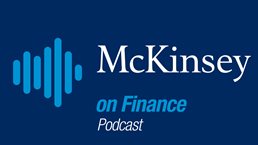Deal activity slowed in 2016, after four years of rapid growth, as companies retreated to smaller deals. At the same time, excess cash and pressure for growth pushed deal prices higher, even as economic and political uncertainty grew. The contribution of megadeals—which had pushed the market to new highs in recent years—declined by 40 percent.
Those are the highlights of deal making in 2016, according to our analysis of 8,057 deals announced1 globally and valued at more than $25 million (Exhibit 1). Specifically, the absolute number of deals fell in 2016, by around 5 percent below the year before. But the total value of deals fell by more than 17 percent from the year before—falling below the 20-year average as a percent of global market capitalization. Much of that decline can be attributed to a sharp reversal in the combined value of megadeals—those valued at more than $10 billion. Their share of global M&A activity fell by 40 percent, from around a third in 2015 to less than a quarter in 2016. It is important to note, however, that despite this drop, deal making in 2016 remained at one of its highest levels of the past ten years.

One bright spot of deal activity was cross-regional M&A, which went up by nearly 20 percent even as cross-border and domestic activity fell by 28 percent and 24 percent, respectively. Most of the increase in cross-regional M&A came from investors in Asia acquiring companies in Europe, up 111 percent when measured by deal value, and in the United States, up nearly 80 percent (Exhibit 2). By industry, the largest two sectors—industrials and telecom, media, and technology—represented a third of activity for the year. Healthcare dropped from the second-busiest sector in 2015 to the sixtieth busiest in 2016, with a 60 percent decline in combined deal value. The only two sectors that grew in absolute terms were transportation and logistics, up from $285 billion in 2015 to $368 billion in 2016, and energy and utilities, up from $217 billion to $272 billion.

Would you like to learn more about our Strategy & Corporate Finance Practice?
Finally, investors appear to be losing the enthusiasm that had pushed deal value into the double digits in the early years of the decade. After hovering above 12 percent from 2010 to 2014, our deal-value-added2 (DVA) index dropped below 10 percent in 2015, and again to around 8 percent in 2016. That’s still well above the long-term average (Exhibit 3), and consistent with a second year of increased deal premiums (Exhibit 4). Pure stock deals were especially affected, with the average DVA dropping from 3.6 percent in 2015 to –0.9 percent in 2016. The DVA for all-cash deals remained strong, falling only slightly during 2015, from 18.3 percent to 17.4 percent.


McKinsey on Finance Podcast
Insights into value-creating strategies and the translation of those strategies into company performance.



